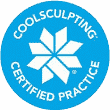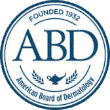As Dr. Shavin mentioned in a previous blog entry, the five basic sun defenses that you should keep in mind when you go outdoors should include:
- Avoiding peak hours of sunlight
- Using sunscreen and/or sunblock
- Selecting appropriate clothing
- Keeping sunglasses handy
- Seeking shade
The next few posts will address each of these in a little more detail beginning with avoiding sunlight.
In general, UV rays are the greatest between 10 a.m. and 4 p.m. It is best to avoid the outdoors during these hours without protection, particularly during summer, in tropical regions, or at altitude. During this time, you should pay close attention to the appropriate use of sunscreen, clothing, sunglasses, and shade.
You can obtain an accurate measure of the amount of UV rays in your area by looking up the Ultraviolet (UV) Index. The UV Index is like a weather forecast. It provides a report on the amount of damaging UV rays that are expected to affect a region on a particular day. The UV Index changes day to day according to time of year, cloud cover, atmospheric ozone, and other factors.
The following table is a breakdown of the UV Index. A high UV Index number means that you are at greater risk of being exposed to ultraviolet radiation. You should take special care to avoid outdoor exposure to sunlight when the UV Index is moderate or greater.
- 0 to 2 = Minimal
- 3 to 4 = Low
- 5 to 6 = Moderate
- 7 to 9 = High
- 10 or more = Very high
The UV Index can be found on our Website or in local papers, usually in the weather section.
Sunscreen
There are several factors to consider when selecting the appropriate sunscreen for proper sun protection. These include:
- Sun Protection Factor (SPF)
- Spectrum of Protection (UVB vs. UVA vs. Both)
- Sensitivity/Allergy to ingredients
- Water Resistance
- Formulation
SPF – Sunscreens are rated by the amount of protection they provide from UVB, measured as the “sun protection factor” or SPF. Sunscreens with higher SPF provide greater protection from the sun. It is best to use sunscreens that offer a minimum SPF of 30.
Broad-spectrum sunscreens – It is best to use a sunscreen that can protect you from both UVA and UVB rays. These are called “broad-spectrum” sunscreens.
Most of the original sunscreens blocked only UVB, but increased awareness of the damage caused by UVA has led to the development of ingredients that protect against UVA too. Broad-spectrum sunscreens combine ingredients to provide a product with greater protection.
Common sunscreen ingredients that provide protection from UVB rays:
- Cinnamates
- Octocrylene
- PABA (para-aminobenzoic acid)
- Padimate O and Padimate A (Octyl Dimethyl PABA)
- Salicylates
Common sunscreen ingredients that provide protection from UVA rays:
Avobenzone (Parsol 1789)
- Benzophenones (oxybenzone, dioxybenzone, sulisobenzone)
More to follow…













